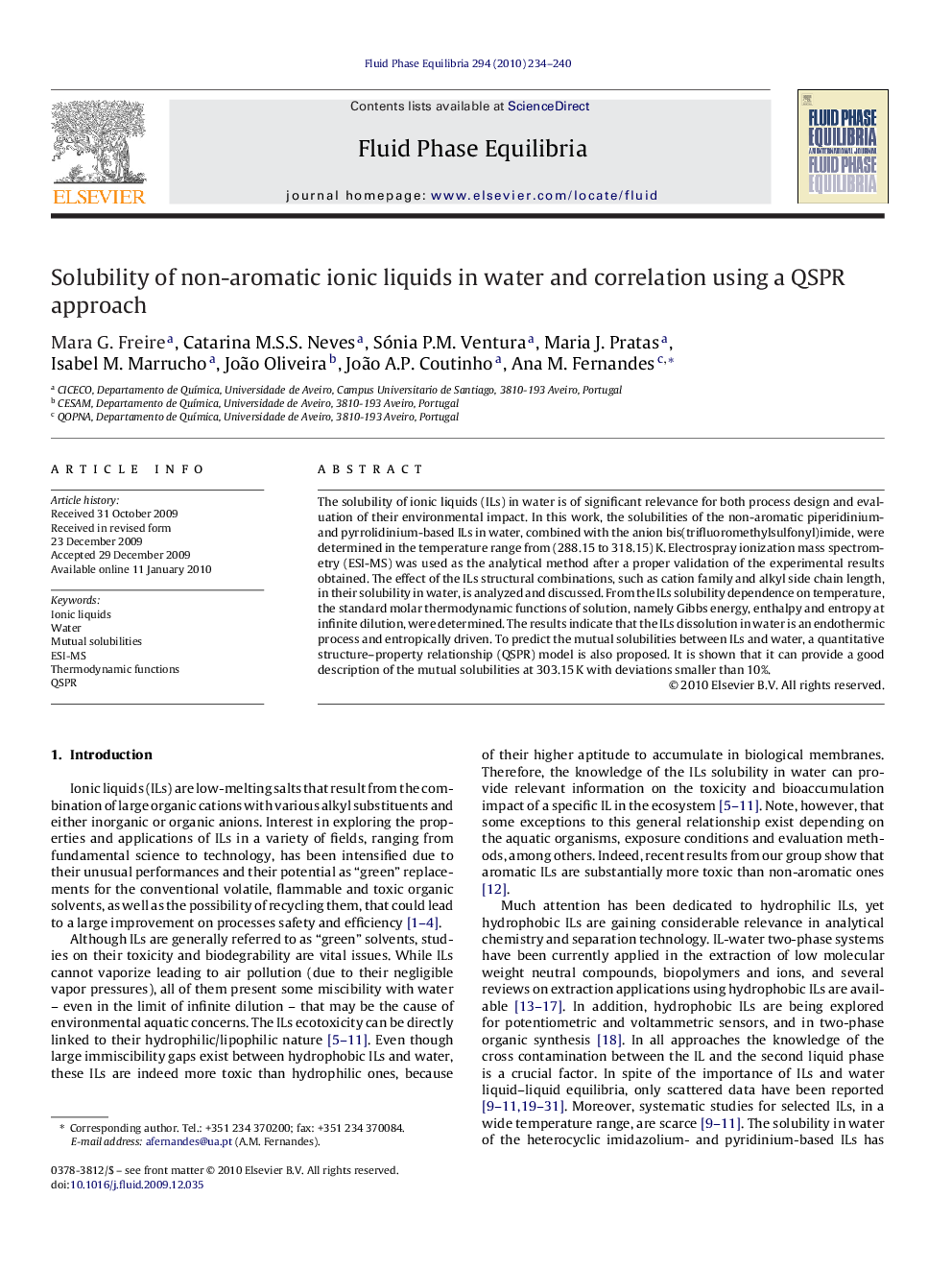| Article ID | Journal | Published Year | Pages | File Type |
|---|---|---|---|---|
| 204600 | Fluid Phase Equilibria | 2010 | 7 Pages |
The solubility of ionic liquids (ILs) in water is of significant relevance for both process design and evaluation of their environmental impact. In this work, the solubilities of the non-aromatic piperidinium- and pyrrolidinium-based ILs in water, combined with the anion bis(trifluoromethylsulfonyl)imide, were determined in the temperature range from (288.15 to 318.15) K. Electrospray ionization mass spectrometry (ESI-MS) was used as the analytical method after a proper validation of the experimental results obtained. The effect of the ILs structural combinations, such as cation family and alkyl side chain length, in their solubility in water, is analyzed and discussed. From the ILs solubility dependence on temperature, the standard molar thermodynamic functions of solution, namely Gibbs energy, enthalpy and entropy at infinite dilution, were determined. The results indicate that the ILs dissolution in water is an endothermic process and entropically driven. To predict the mutual solubilities between ILs and water, a quantitative structure–property relationship (QSPR) model is also proposed. It is shown that it can provide a good description of the mutual solubilities at 303.15 K with deviations smaller than 10%.
